Related Research Articles
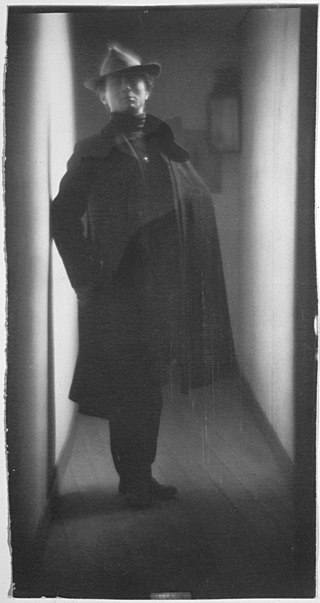
Edward Jean Steichen was a Luxembourgish American photographer, painter, and curator, renowned as one of the most prolific and influential figures in the history of photography.

Paul Strand was an American photographer and filmmaker who, along with fellow modernist photographers like Alfred Stieglitz and Edward Weston, helped establish photography as an art form in the 20th century. In 1936, he helped found the Photo League, a cooperative of photographers who banded together around a range of common social and creative causes. His diverse body of work, spanning six decades, covers numerous genres and subjects throughout the Americas, Europe, and Africa.

Sally Mann HonFRPS is an American photographer known for making large format black and white photographs of people and places in her immediate surroundings: her children, husband, and rural landscapes, as well as self-portraits.
Robert Adams is an American photographer who has focused on the changing landscape of the American West. His work first came to prominence in the mid-1970s through his book The New West (1974) and his participation in the exhibition New Topographics: Photographs of a Man-Altered Landscape in 1975. He has received two Guggenheim Fellowships, a MacArthur Fellowship, the Deutsche Börse Photography Prize and the Hasselblad Award.

Joel Meyerowitz is an American street, portrait and landscape photographer. He began photographing in color in 1962 and was an early advocate of the use of color during a time when there was significant resistance to the idea of color photography as serious art. In the early 1970s he taught photography at the Cooper Union in New York City.
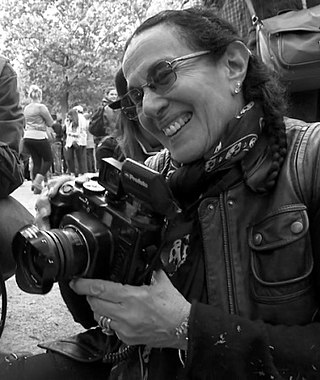
Mary Ellen Mark was an American photographer known for her photojournalism, documentary photography, portraiture, and advertising photography. She photographed people who were "away from mainstream society and toward its more interesting, often troubled fringes".

Fine-art photography is photography created in line with the vision of the photographer as artist, using photography as a medium for creative expression. The goal of fine-art photography is to express an idea, a message, or an emotion. This stands in contrast to representational photography, such as photojournalism, which provides a documentary visual account of specific subjects and events, literally representing objective reality rather than the subjective intent of the photographer; and commercial photography, the primary focus of which is to advertise products or services.
The following outline is provided as an overview of and topical guide to photography:
Shōmei Tōmatsu was a Japanese photographer. He is known primarily for his images that depict the impact of World War II on Japan and the subsequent occupation of U.S. forces. As one of the leading postwar photographers, Tōmatsu is attributed with influencing the younger generations of photographers including those associated with the magazine Provoke.
Jerry Spagnoli, a photographer since the mid-1970s, is best known for his work with the daguerreotype process, a complex photographic technique invented in 1839 that produces images on highly polished, silver clad copper plates. Initiating his exploration of the daguerreotype in San Francisco in 1994, Spagnoli experimented with nineteenth-century materials and studied the effects achieved by early practitioners to understand the technical aspects of the process, as well as its expressive and visual potential as a medium. He began work on an ongoing series entitled “The Last Great Daguerreian Survey of the 20th Century” in 1995, continuing the series upon returning to the east coast in 1998. The project features views of the metropolis as well as images of historically significant events including the destruction of the World Trade Center on 9/11, the vigil following the disappearance of John F. Kennedy, Jr., and Times Square at midnight on the eve of the new millennium. Considered the leading expert in the revitalization of the daguerreotype process, Spagnoli is also noted for his collaboration with artist Chuck Close on daguerreotype portraits and nudes.
David Graham is an American artist photographer and professor at the University of the Arts in Philadelphia. He currently lives and works in De Pere, Wisconsin. Embracing popular forms of American photography, David Graham explores contemporary culture through the idiosyncratic nature of the American landscape. His work is in many collections, including the Museum of Modern Art, New York City; the San Francisco Museum of Modern Art; the Art Institute of Chicago; the Philadelphia Museum of Art; the George Eastman House, Rochester, New York; the International Center of Photography, New York City; and the Brooklyn Museum, New York. He is represented by the Laurence Miller Gallery in New York City, Etherton Gallery in Tucson, Arizona, and the PDNB Gallery in Dallas, Texas.
Nathan Lyons was an American photographer, curator, and educator. He exhibited his photographs from 1956 onwards, produced books of his own and edited those of others.
Marie Cosindas was an American photographer. She was best known for her evocative still lifes and color portraits. Her use of color photography in her work distinguished her from other photographers in the 1960s and 1970s. Most of her photographs were portraits and pictures of objects like dolls, flowers, and masks.
Dan McCormack is a photographer and professor at Marist College in New York, where he heads the photography program.
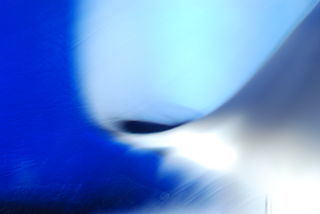
Abstract photography, sometimes called non-objective, experimental or conceptual photography, is a means of depicting a visual image that does not have an immediate association with the object world and that has been created through the use of photographic equipment, processes or materials. An abstract photograph may isolate a fragment of a natural scene to remove its inherent context from the viewer, it may be purposely staged to create a seemingly unreal appearance from real objects, or it may involve the use of color, light, shadow, texture, shape and/or form to convey a feeling, sensation or impression. The image may be produced using traditional photographic equipment like a camera, darkroom or computer, or it may be created without using a camera by directly manipulating film, paper or other photographic media, including digital presentations.
Charles H. Traub is an American photographer and educator, known for his ironic real world witness color photography. He was chair of the photography department at Columbia College Chicago, where he established its Museum of Contemporary Photography (MOCP) in 1976, and became a director of New York's Light Gallery in 1977. Traub founded the MFA program in Photography, Video, and Related Media at the School of Visual Arts in New York City in 1987, which was the first program of its kind to fully embrace digital photographic practice. He has been Chairperson of the program since. Traub has published many books of his photographs and writings on photography and media.
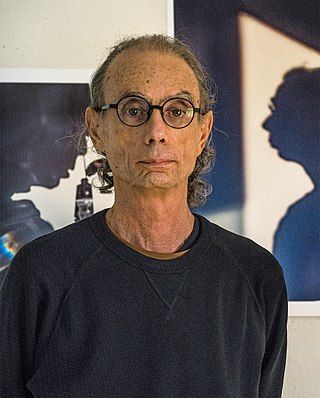
David Lebe is an American photographer. He is best known for his experimental images using techniques such as pinhole cameras, hand-painted photographs, photograms, and light drawings. Many of his photographs explore issues of gay identity, homoeroticism, and living with AIDS, linking his work to that of contemporaries such as Robert Mapplethorpe, Peter Hujar, and David Wojnarowicz. Though his style and approach set him apart from these contemporaries, "Lebe is now incontrovertibly part of the history of twentieth-century queer artists."
Raymond Jacobs was an American photographer, filmmaker, and businessman.
Jeannette Klute was an American photographer who helped develop the Dye-transfer process at the Eastman Kodak Company and is credited with demonstrating the artistic possibilities of color photography. Klute also paved the way for women to work in the photography industry.
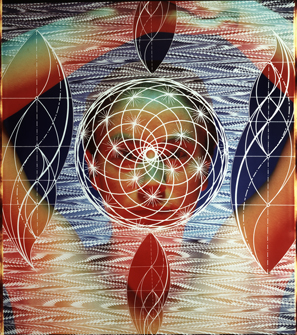
Ellen Carey is an American artist known for conceptual photography exploring non-traditional approaches involving process, exposure, and paper. Her work has ranged from painted and multiple-exposure, Polaroid 20 x 24, Neo-Geo self-portraits beginning in the late 1970s to cameraless, abstract photograms and minimal Polaroid images from the 1990s onward, which critics often compare to color-field painting. Carey's sixty one-person exhibitions have been presented at museums, such as the Amon Carter Museum of American Art, International Center of Photography (ICP) and Wadsworth Atheneum Museum of Art, alternative spaces such as Hallwalls and Real Art Ways, and many commercial galleries. Her work is in numerous museum collections, including those of the Metropolitan Museum of Art, Whitney Museum of American Art, Los Angeles County Museum of Art, Centre Pompidou, and Smithsonian American Art Museum. In 2019, she was named one of the Royal Photographic Society (London) "Hundred Heroines", recognizing leading women photographers worldwide. Los Angeles Times critic Leah Ollman describes her photography as "inventive, physically involving, process-oriented work" and her recent photograms as "performative sculptures enacted in the gestational space of the darkroom" whose pure hues, shadows and color shifts deliver "optical buzz and conceptual bang". New York Times critic William Zimmer wrote that her work "aspires to be nothing less than a reinvention, or at least a reconsideration, of the roots or the essence of photography." In addition to her art career, Carey has also been a longtime educator at the Hartford Art School and a writer and researcher on the history of photography.
References
- ↑ Hirsch, Robert (2005). Exploring Color Photography: From the Darkroom to the Digital Studio. New York: McGraw-Hill. p. 263. ISBN 9780072407068.
- ↑ Newhall, Edith (October 5, 2008). "Mandalas in photographs" (PDF). Philadelphia Inquirer. Archived from the original (PDF) on June 17, 2014. Retrieved November 13, 2013.
- ↑ "Spirit: From the Infinity Series". Southeast Museum of Photography. Archived from the original on 7 January 2014. Retrieved 11 December 2013.
- ↑ Rexer, Lyle (2009). The Edge of Vision: The Rise of Abstraction in Photography. New York: Aperture. pp. Cover, 212–213. ISBN 9781597111003.
- ↑ Ewing, William (2006). Face: The New Photographic Portrait . London: Thames & Hudson. pp. 212–213. ISBN 9780500543214.
- ↑ Groopman, Jerome. "Silent Minds". The New Yorker. Retrieved 11 December 2013.